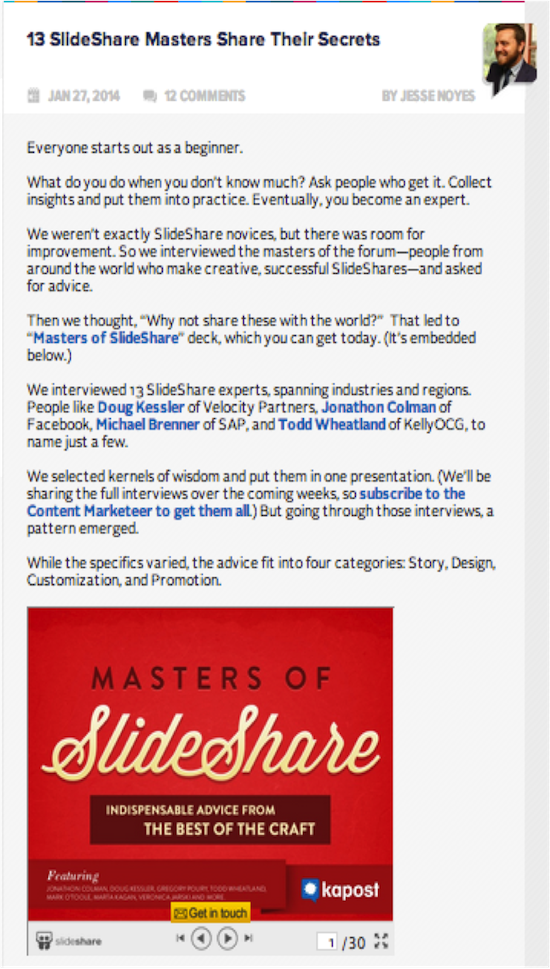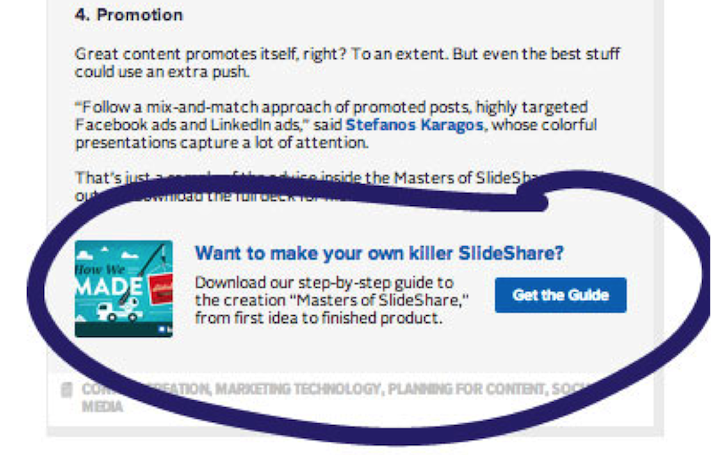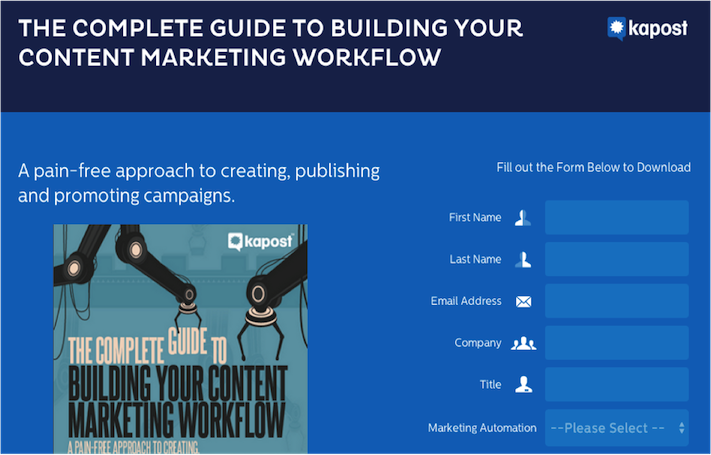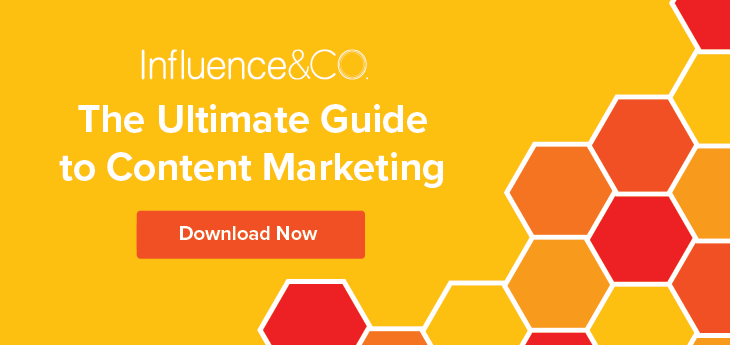
In today’s sales environment, “content” doesn’t just warm prospects up to a call. It’s a reason they purchase.
Content marketing is a strategy focused on creating and distributing valuable, relevant, and consistent content to attract and acquire a clearly defined audience — with the objective of driving profitable customer action.
To learn insider tips and tried-and-true methods to creating and distribute your content, check out this free guide.
The technique has been used for years to attract new customers to businesses. And with the advent of marketing automation software and a new kind of buyer’s journey, content marketing has become instrumental in moving prospects down the funnel toward purchase, from the first touch down to the agreement-signing stage of a deal.
Buyers move through a decision-making process, starting with “How do I solve this problem?” and moving to “Do I have a need for this product?” before ending with “Why should I buy from this company versus another?” Content addresses (or should address) each of these questions, helping your business and sales team to be seen as thought leaders and trusted resources.
Let’s walk through how content can assist with the various phases of the sales funnel, as well as what results you can expect.
Top of the Funnel

Top-of-funnel content is the secret sauce for inbound marketing. This is where fun, shareable pieces of content are launched on a big scale to attract new eyes and engage visitors. Online users discover top-of-funnel pieces while looking for information online, or they serve as answers to specific Google search inquires.
When it comes to top-of-funnel content, the bigger the splash, the better. You want to draw in as many potential customers and buyers as possible.
At Kapost, we call top-of-funnel content “the appetizer.” This content is light, easy to digest, and shareable. It doesn’t require a big commitment from your audience because it’s always un-gated, and its broad appeal makes it easy to distribute on myriad online platforms. For example, you might:
- Make an infographic.
- Promote it on Twitter.
- Post it to Pinterest.
- Write a blog post about it, including a custom-made graphic.
- Provide a free embeddable code for others to post the infographic on their sites.
- Post a small graphic as a teaser on the homepage of your website.
Common Top-of-Funnel Content Pieces
- Infographics
- Blog posts
- Videos
- Interactive web features
- E-magazines
- Photos or graphics
- Social media promotions
Once you’ve snatched your audience’s attention, move them into your sales funnel with a strategic call to action. This should direct the user to a downloadable form (in which she must give you her contact information).
Typically, calls to action point to a gated asset. The asset provides the reader with more in-depth context or granular understanding of the topic; we call this the “entrée” material. If your reader really likes what she saw or read in the appetizer piece, she’ll opt in, giving you her email address and other pieces of information. Using marketing automation software, you now have a digital fingerprint of this user — and a new name in your database.
Middle of the Funnel

Middle-of-the-funnel efforts focus on nurturing leads.
With the help of technology like marketing automation, you can track users’ complete online activity — including email opens, pages visited on your site, unique social media engagement, and more. Through this behavior, content marketing teams “learn” who their leads are and serve up content materials that are more relevant, more useful, and timelier for certain kinds of users.
At this point, your content should usher leads further into your funnel by establishing greater trust and delivering slightly more product-centric content. Many of our middle-of-the-funnel materials are “entrée” assets. They’re used in the middle of the funnel because they are more researched and in-depth, and they get to the bottom of specific topics.
Common Middle-of-Funnel Content Pieces
- Blog posts
- E-books
- Guides or handbooks
- Whitepapers
- Webinars
- Templates or worksheets
- Video event sessions
Bottom of the Funnel

Traditionally, sales owns the bottom of the funnel, but marketing and sales need to work hand in hand to create insightful content that closes deals — particularly in Challenger Sale sales organizations.
Content served up to late-stage buyers continues to develop trust and credibility and should also communicate urgency. At this point, it’s also important to touch on the functionality and benefits of your offerings. This is the content that enables your sales team to close the gap between best practices and your products or services.
To develop bottom-of-funnel content, remain sensitive to your buyer’s pain points and emotions. Perhaps she is now wondering, “Why should I buy from this company versus its competitor?” Deliver content that addresses these questions. Find ways to be buyer-sympathetic, and showcase the benefits of your product specifically for this buyer with industry- or company-specific content.
Common Bottom-of-Funnel Content Pieces
- Case studies
- Testimonials
- Third-party studies/research reviews
- Product tutorials (videos, step-by-step guides)
- Competitive analysis
Putting It All Together
Content doesn’t serve just the top of the funnel. Content marketing can — and should — be used throughout the buyer’s journey, all the way to a signed agreement. As your buyer moves down the funnel and closer to the product, so should your content — starting with a wide, catch-all approach and becoming more focused as you move toward closing.












